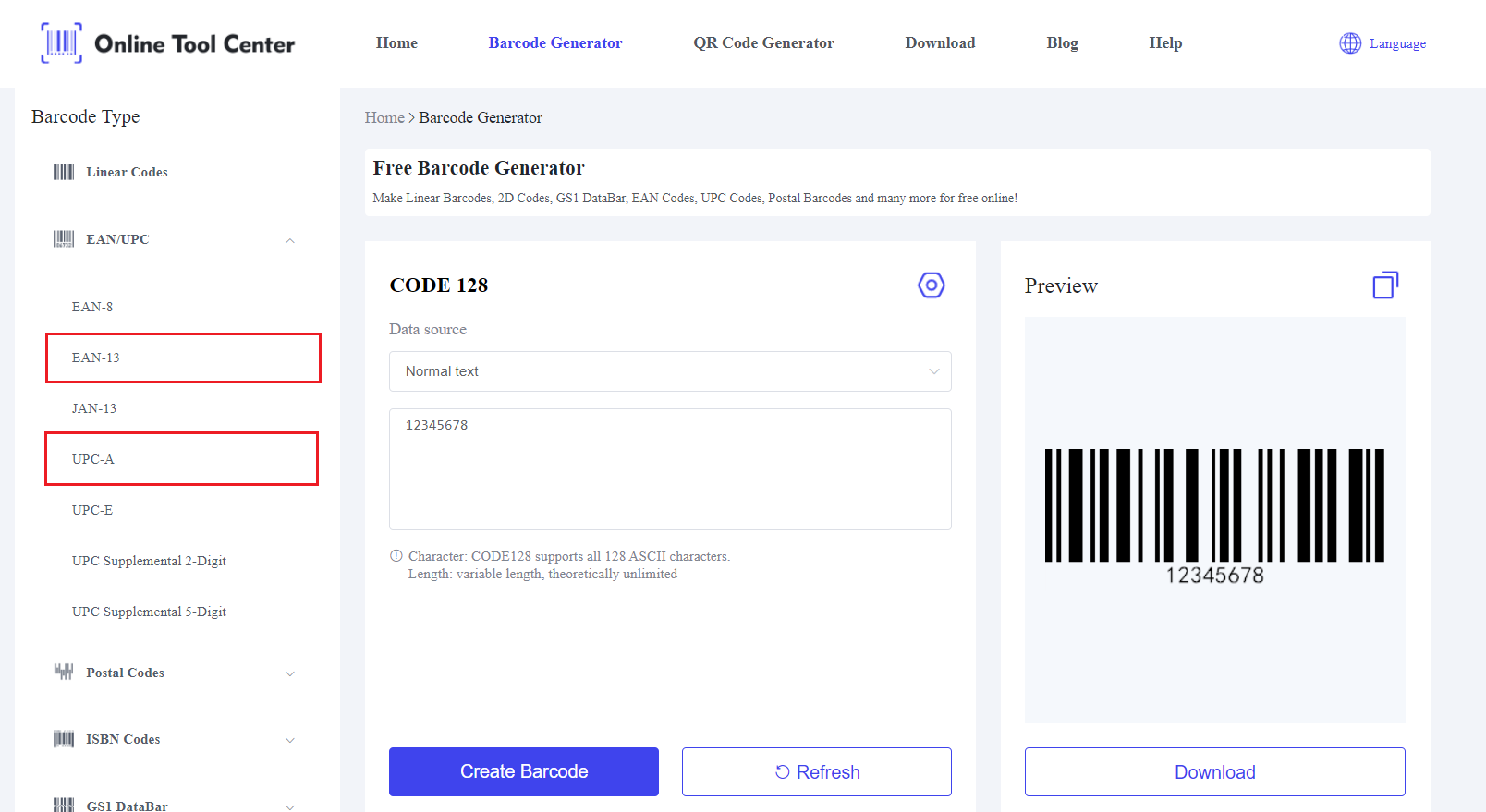The Global Trade Item Number (GTIN) barcode is pivotal role in this process, ensuring unique product identification and enhancing supply chain operations.
This article will cover the fundamentals of GTIN, its types, structure, benefits, and practical implementation for businesses.
What is GTIN?
A GTIN, or Global Trade Item Number, is a unique identifier assigned to trade items, making it indispensable for global commerce.
It is used to identify products uniquely, facilitating their tracking and management across the supply chain.
GTINs are standardized by GS1, a global organization dedicated to improving business efficiency through standards.
Types of GTIN Barcodes
GTINs come in various formats, each suited for different applications:
● GTIN-12 (UPC): Commonly used in North America, primarily for retail products.
● GTIN-13 (EAN): Used internationally for retail items.
● GTIN-14 (ITF-14): Utilized for grouping products, typically for cases and pallets.
● GTIN-8: Used for small items with limited space for barcodes.
Structure of a GTIN Barcode
A GTIN consists of three main components:
Company Prefix:
Assigned by GS1, this unique prefix identifies the company that owns the brand of the product.
Item Reference:
A unique number is assigned by the company to a specific product.
Check Digit:
A digit is calculated to ensure the GTIN is correctly composed.
Calculating the Check Digit:
The check digit is derived through a mathematical formula, which can be easily calculated using tools like the GS1 Check Digit Calculator.
For example, if your GTIN-12 is 123456789012, the check digit helps verify the accuracy of the entire number.
Benefits of Using GTIN
Global Recognition:
GTINs ensure that products can be identified and sold worldwide, meeting international standards.
Supply Chain Efficiency:
Using GTINs enhances traceability, and inventory management, and reduces errors in the supply chain.
E-commerce Integration:
GTINs are essential for selling products on major e-commerce platforms like Amazon, eBay, and Alibaba, as they require standardized product identifiers.
Several businesses have successfully implemented GTINs to streamline their operations. For instance, a mid-sized retailer improved inventory management and reduced losses by adopting GTINs, leading to increased efficiency and customer satisfaction.
How to Obtain a GTIN Barcode?
To obtain a GTIN, you must register with GS1. This involves:
1. Visiting the GS1 website and selecting the country of your business.
2. Completing the registration form with your business details.
3. Paying the registration fee to receive your company prefix.
Once registered, you can use your company prefix to create GTIN barcodes for your products. This involves assigning item reference numbers to each product and calculating the check digit for accuracy.
Input your GTIN into a barcode generator, and select the desired barcode format (such as UPC-A, EAN-13, or ITF-14), and create the barcode.

Finally, ensure that the printed barcode is clear and correctly placed on your product for easy scanning. Test the GTIN barcode with a scanner to verify its accuracy and readability.
Using a GTIN barcode generator simplifies the process, ensuring that your products are easily identifiable and compliant with global standards, ultimately enhancing your supply chain efficiency and e-commerce integration.
FAQs
1. What is the difference between GTIN and UPC?
A GTIN is a global identifier for trade items, while a UPC is a type of GTIN-12 used mainly in North America.
2. Is a GTIN the same as a barcode?
No, a GTIN is a numeric identifier, whereas a barcode is the graphical representation of that number for scanning.
3. Is GTIN always 14 digits?
GTINs can be 8, 12, 13, or 14 digits, depending on the application.
In conclusion, GTIN is a vital tool in global trade, ensuring unique product identification and streamlining supply chain operations.
By adopting GTIN barcodes, businesses can enhance efficiency, comply with global standards, and succeed in both local and international markets.
Start using GTIN and generate your barcodes easily with a barcode generator.




